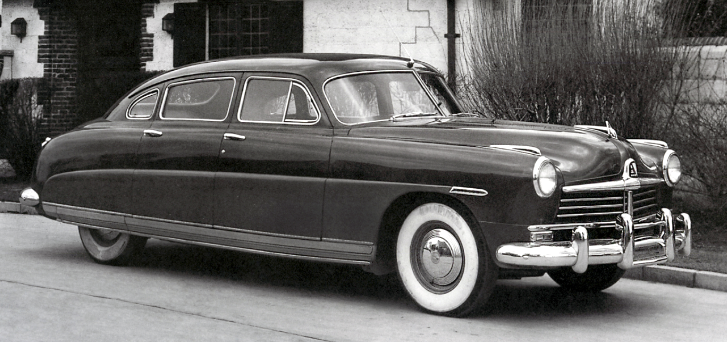1948 Hudson Convertible
The new Hudsons featured an essentially unitized body whose lower side frame cradled passenger compartment seating. Advertising stressed that the new Hudsons had "step down" entry. Well, it would be "step down" if one first stepped on the high door sill atop that side frame and made a second step down to the flooring. For many folks it was really a "step over" if a door sill step was omitted. Nevertheless, Hudsons were low cars for their time.
There was even a convertible version available. But here was something odd about it, as will be shown in the images below.
1948 Hudson Commodore Six sedan.
1948 Hudson Convertible Brougham. Note the small roof sheet metal segment above the windshield. Other American convertibles did not have that feature, which made it seem odd.
Phantom view of the 1948 Hudson sedan's unit body structure. It frames the windshield opening and has no relationship to the convertible's roof segment's overall shape.
1948 Hudson Commodore Eight Convertible, Barrett-Jackson photos.
Side view. Compare to the image below.
The new, postwar 1949 Chevrolet DeLuxe Convertible, Mecum Auctions photo. In those days, most American brands including Chevrolet were body-on-frame affairs. Windshield framing for convertibles was minimally structural, and the canvas top's leading edge sits atop the framing.
In theory, Hudson could have reduced the size of that roof segment, but the body structure noted above would not have allowed the solution seen on the Chevy. At best, there would have been about a two-inch (5 cm) strip of sheet metal above the strongly curved windshield, and the front of the canvas top would have had to conform to that curve.
My guess is that Hudson engineers favored a quick-and-dirty solution -- the front of the top being simply squared off and roof sheet metal adjusted to fit. Please let us know if you can tell us what actually happed.









Comments
Post a Comment